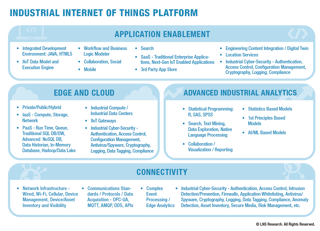Plattform Industrie 4.0, the German government’s IIoT development program, and the Industrial Internet Consortium (IIC), an open membership, international non-profit consortium, recently announced that the two will align on their Industrial Internet of Things (IIoT) architecture. The purpose behind it is to enhance each of their similar models for future purposes and efforts in the development of the IIoT in the years to come.
The two organizations also agree to collaborate the IIC Testbeds, I4.o Test Facility Infrastructures, standardizations, and other aspects relative to the IIoT architecture. IIC’s Executive Director, Dr. Richard Mark Soley said, “The effort shows that smart technical people can bridge any gap and find a way to solve problems that might otherwise have created barriers to entry in the adoption of IoT technology for industrial applications.” To read more on this click here.
Alcoa and U.S Army Project Team Up Once Again
It was recently announced that Alcoa Inc., a leader in lightweight metals technology, was awarded a 5 year contract with the U.S. Army that amounts up to $50M. The project Alcoa has been assigned by the military is to produce a lightweight vehicle to use for ground combat.
This project allows Alcoa Defense to enhance the long-standing partnership it has had with the U.S. Army and its Tank Automotive Research, Development, and Engineering Center (TARDEC). Alcoa also worked similarly with the U.S. Army in 2014 when it developed the world’s largest, single-piece aluminum forging, produced as a hull for combat vehicles. Eric Roegner, Alcoa Defense President, said, “Alcoa’s lightweight solutions have improved troop protection, while reducing vehicle weight and assembly time. We look forward to building on our successful track record to help develop the next generation combat vehicle.” To read more about this click here.
Hype Around the IoT Leads to Bigger & Better Things
During February of this year the Mobile World Congress was held in Barcelona, Spain. The event targets the tech consumer as new advanced technological products are introduced and later released. This year presented something that was new to the Congress, and that was the IIoT.
As LNS Research has expressed before, there is a lot of hype around the Internet of Things (IoT) and the IIoT. William Ruh, CEO of GE Digital, joined the Congress as the keynote speaker and commented on the IIoT and Smart Manufacturing, where he said, “The next decade is for the industrial Internet. This is probably the biggest opportunity we have seen in two to three decades.” Recently, LNS has dived deeper into a key element of enabling the IIoT, what we term, “Digital Transformation,” which can be seen from our Digital Transformation blog post series written by Principal Analyst, Dan Miklovic. To read more about the Mobile World Congress click here, and click here to begin the blog post series by Dan Miklovic.
L’Oréal Takes a Steps Towards Wearables in Beauty
Earlier this year the 2016 Consumer Electronics Show took place where, amongst the many companies that attended, L’Oréal Group announced its latest dermatological beauty product. While the company is highly recognized as a skincare-focused beauty supplier, it decided that there was more that could be done in the name of a perfect complexion.
L’Oréal Group’s dermatological skincare brand, La Roche-Posay, announced its new beauty product: My UV Patch. The company claimed the product is the first flexible and wearable technology in the cosmetic industry of its kind. What is described as a transparent, thin, and flexible patch is said to be worn in situations of UV exposure to allow the wearer to monitor their sun exposure, prompting consumers to be wary of sun damage and take precaution. There is also a companion app that users download to track and analyze the conditions of their skin. The product is not available for wholesale yet, but L’Oreal Group expects it to be later this year. To read more about this click here.
 Plattform Industrie 4.0 & IIC Collaborate IoT Efforts
Plattform Industrie 4.0 & IIC Collaborate IoT Efforts